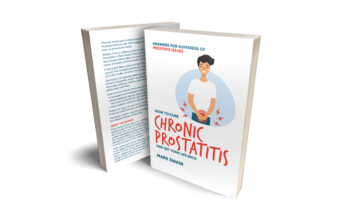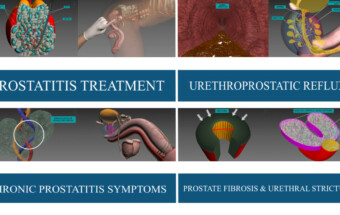What is the reason for the erectile dysfunction? What can your protocol do about it?
From my experience in dealing with Chronic Prostatitis, about 60% of my cases have had the symptom of erectile dysfunction when they first visited me. It is usually the most prominent symptom that causes patients from around the world to find and ultimately visit me, even though they simultaneously have a number of other critical symptoms that they are either ignoring or underestimating.
Erectile dysfunction is caused by the spread of the infection towards the posterolateral areas of the prostate that are in the close vicinity to the erectile nerves. The infection produces an edema in the tissue that surrounds the nerves which in turn strangulates them and decreases the stimuli that are propagated along the nerves. As such, there is a gradually worsening of the erectile nerve function, which in turn creates a dysfunction in the penile cavernosal tissue. In time, as this phenomenon is becoming more chronic, there happens a sclerosis-fibrosis of the cavernosal spaces which in turn lose their elasticity. As such they can no longer be expanded, thus rendering the veinal suppression impossible between themselves and the tunica albuginea. This means they can no longer stop the effect of blood flow inside the veins, which leads to venous leakage.
From a symptoms perspective, the effect happens in roughly three stages.
- First stage: The morning erections are becoming more and more sparse. The erections that happen due to any kind of sexual arousal may be rigid at the beginning, but they are not as long lasting as before with oscillations between rigidity and flacidity.
- Second stage: This stage usually starts after about 6-12 months from the first stage. The morning erections are now a very rare event and are generally flacid, whereas the erections caused by sexual arousal are now semi-rigid and they cannot be sustained during sexual intercourse and they end up to flacidity fast.
- Third stage: Morning erections no longer exist. Erections caused by sexual arousal are mostly flacid (they are not even close to semi-rigidity) and it takes great effort to perform vaginal intercourse, if even possible at all.
Erectile dysfunction can be combated, but it must be done in a two-stage process as there is a cause (i.e. Chronic Prostatitis) and an effect (described above) which then leads to permanent lesions to the penis (i.e. mild fibrosis-sclerosis of the cavernosal tissue).
Chronic Prostatitis Therapy and Treatment
So, the patient first has to treat the cause of the symptom, which is Chronic Prostatitis, and for that I practice the Georgiadis Protocol which is explained in detail in other sections of this website. When the patient has reached stages 2 or 3 of the erectile dysfunction symptom as described above, they will require additional work, since now simply unblocking the nerves by curing CP is not enough. So, after usually a couple of weeks from the beginning of the Georgiadis Protocol therapy, I additionally begin performing supplementary treatments for the restoration of the cavernosal penile tissue.
I have thus developed what I coin as the “Georgiadis Erectile Revivification Protocol”(GERP), which combines three therapeutic methods simultaneously:
- Intracavernosal injections of various vasoactive agents
- Vacuum Pumps
- Shockwave Therapy
The above techniques practically perform a “reviving physiotherapy” of the penile tissue and its arterial micro-circulation. The frequency of therapies is typically 3 times per week, for a time of 6-8 weeks, but the more severe cases may need 12-16 weeks. The results are very encouriging as about 90% of my patients notice significant improvement after going through the aforementioned methodology, but one should always keep in mind that they first need to need to treat their Chronic Prostatitis otherwise it will all be in vain.



